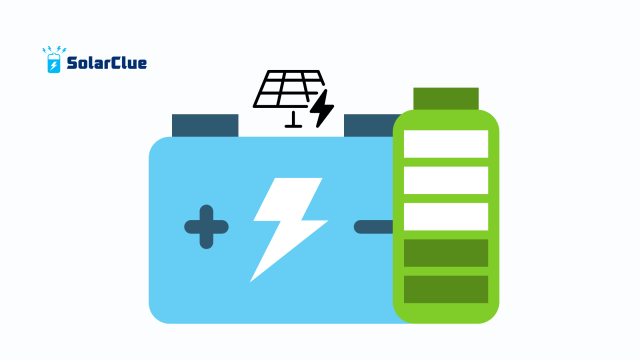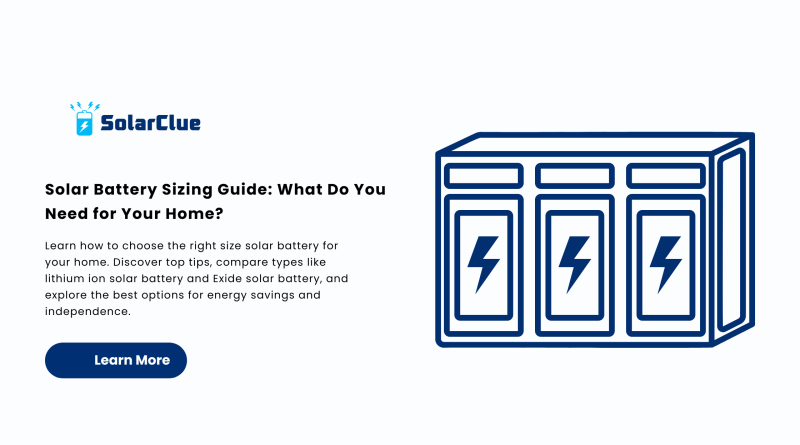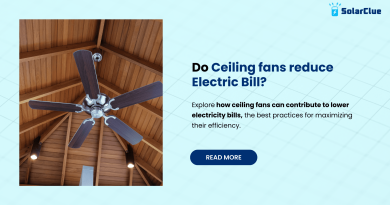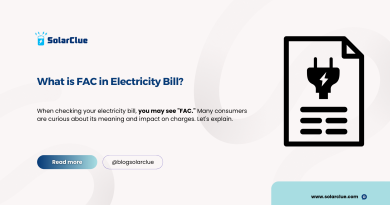Solar Battery Sizing Guide: What Do You Need for Your Home?
As solar energy becomes a popular choice for homeowners, knowing the right solar battery size is essential. The correct battery size ensures you store enough power for your household’s energy demands, maximize your savings, and stay powered during outages. In this guide, we’ll break down the essentials of sizing a home solar battery system, explain the differences in battery types, and help you understand solar battery price and what makes the best value.
Table of Contents
- 1 What is a Solar Battery?
- 2 Why Battery Size Matters in a Solar System
- 3 Key Factors to Determine Solar Battery Size
- 4 Popular Types of Solar Batteries
- 5 Understanding Solar Battery Price in India
- 6 Best Solar Light with Battery for Home Use
- 7 How Many Batteries Do You Need?
- 8 How to Calculate the Right Battery Size
- 9 Benefits of a Properly Sized Home Solar Battery System
- 10 Choosing the Right Solar Power Inverter for Home
- 11 Government Incentives and Subsidies
- 12 Installation Tips and Best Practices
- 13 Top Brands to Consider in India
- 14 Common Mistakes to Avoid
- 15 Conclusion
What is a Solar Battery?
A solar battery is a device that stores excess energy generated by your solar panels during the day for use at night or during power outages. It helps reduce reliance on the grid and increase your energy independence. Understanding what is solar battery is the first step in evaluating your home’s energy storage needs.
Why Battery Size Matters in a Solar System
The size of the battery for solar system directly impacts how much energy you can store. If it’s too small, you may run out of power quickly. If it’s too large, you might overspend on storage capacity you don’t use. Your energy usage, panel output, and the number of backup hours you require all influence the ideal size.
Key Factors to Determine Solar Battery Size
1. Daily Energy Consumption
Check your electricity bill to determine your household’s daily energy consumption in kilowatt-hours (kWh). A typical household may consume between 20-30 kWh per day.
2. Depth of Discharge (DoD)
Batteries don’t typically discharge 100% of their capacity. A good lithium ion solar battery may offer 90-95% DoD, while lead-acid batteries offer around 50-60%.
3. Solar Panel Output
How much energy your solar panels produce directly affects how much excess energy is stored. This influences the size of the battery for solar system you’ll need.
4. Backup Requirement
Decide whether your battery is for full home backup or essential loads only. This choice significantly changes the sizing needs.
Popular Types of Solar Batteries

Lithium Ion Solar Battery
Lithium ion solar battery is compact, has a high DoD, longer lifespan, and low maintenance. Though pricier, it offers better value long-term.
Exide Solar Battery
Exide solar battery is a popular lead-acid option in India known for reliability and affordability. It’s a great choice for budget-conscious buyers.
Understanding Solar Battery Price in India
The solar battery price varies by type, capacity, and brand. On average:
- Lithium ion solar battery: INR 30,000 to INR 1,50,000+ depending on size and features
- Exide solar battery: INR 10,000 to INR 50,000 for most models
Installation costs and solar power inverter for home can add to the total investment, so consider the full setup.
Best Solar Light with Battery for Home Use
If you’re looking for compact solutions, solar light with battery for home is a great option. These units are perfect for smaller energy needs, garden lighting, or emergency lighting. They’re easy to install and affordable.
How Many Batteries Do You Need?
Let’s say your home uses 10 kWh per day, and you want a 90% DoD battery. You would need a solar battery with roughly 11-12 kWh capacity to stay fully powered without grid reliance.
How to Calculate the Right Battery Size
Use this formula: Battery Capacity (kWh) = (Daily energy usage × Days of autonomy) / DoD
For example: If your daily energy usage = 10 kWh Days of backup = 1 DoD = 90% Then, Battery Size = (10 x 1) / 0.9 = ~11.1 kWh
Benefits of a Properly Sized Home Solar Battery System
- Maximum energy efficiency
- Reduced electricity bills
- Enhanced energy independence
- Reliable power backup
- Better return on investment
Choosing the Right Solar Power Inverter for Home
Your solar power inverter for home must match your battery and panel specifications. It converts the DC power stored in your home solar battery system into usable AC power for your appliances.
Government Incentives and Subsidies
Many state governments and DISCOMs offer subsidies on solar systems, including solar battery and inverters. Check local policies to reduce your investment cost.
Installation Tips and Best Practices
- Work with certified professionals
- Ensure proper ventilation for the battery system
- Regularly maintain and monitor the system
- Integrate a smart monitoring app for real-time performance data
Top Brands to Consider in India
- Exide solar battery
- Luminous
- Amaron
- Okaya
- Loom Solar (for lithium ion solar battery)
Common Mistakes to Avoid
- Oversizing or undersizing the battery
- Ignoring DoD and efficiency ratings
- Choosing the wrong type of battery
- Skipping professional installation
Conclusion
Sizing your solar battery correctly is key to unlocking the full benefits of solar energy. Whether you opt for a lithium ion solar battery, a trusted Exide solar battery, or a simple solar light with battery for home, understanding your needs helps you make the best decision. Don’t forget to consider solar battery price, inverter compatibility, and overall system efficiency. For more detailed guides and product reviews, check out solarclue.com and explore our latest posts at blog.solarclue.com.
Empower your home the smart way—visit our website and shine brighter every day!
FAQs
1. What size solar battery do I need for a 3BHK home?
It depends on your energy usage, but generally, a 10–15 kWh battery is sufficient for moderate daily use.
2. How long will a 5kWh solar battery last?
Depending on your load, a 5kWh battery can last 5-7 hours for essential appliances or up to 24 hours for minimal usage.
3. Are lithium-ion batteries better than lead-acid for home use?
Yes, they offer higher efficiency, longer lifespan, and require less maintenance compared to lead-acid batteries.
4. What is the average lifespan of a home solar battery?
Lithium-ion batteries can last 10–15 years, while lead-acid batteries typically last 5–7 years.
5. Can I add more batteries to my solar system later?
Yes, many systems are expandable, but it’s best to plan for scalability during initial installation.




